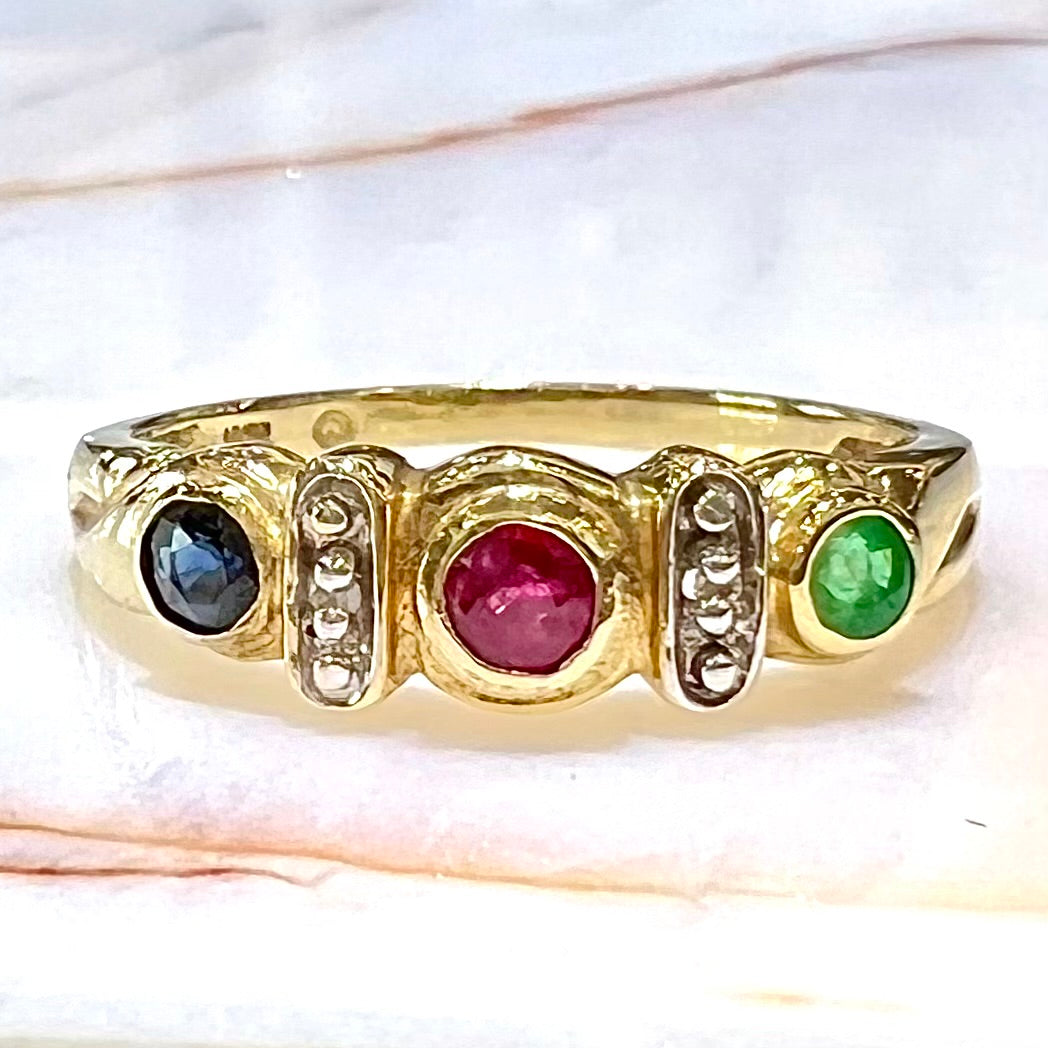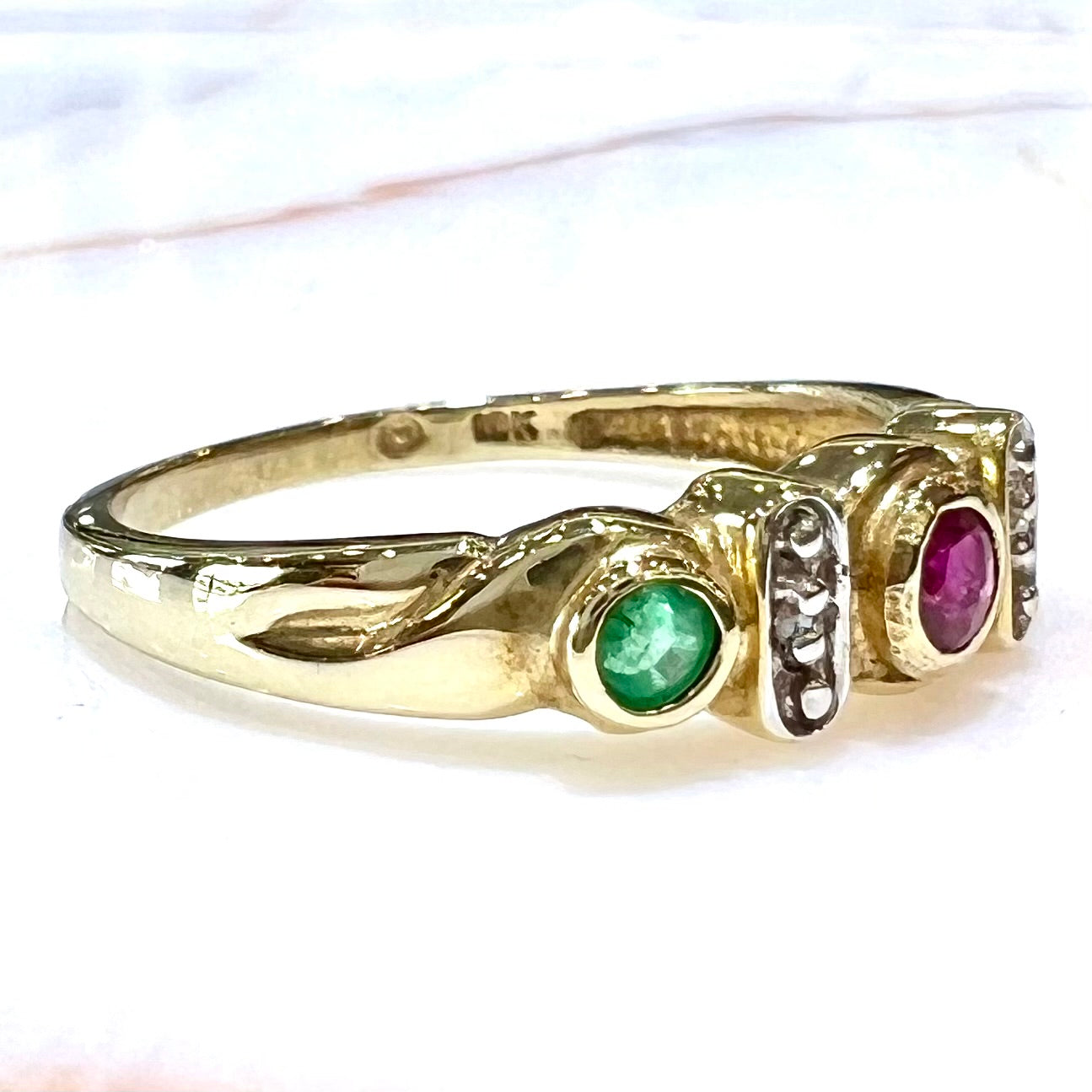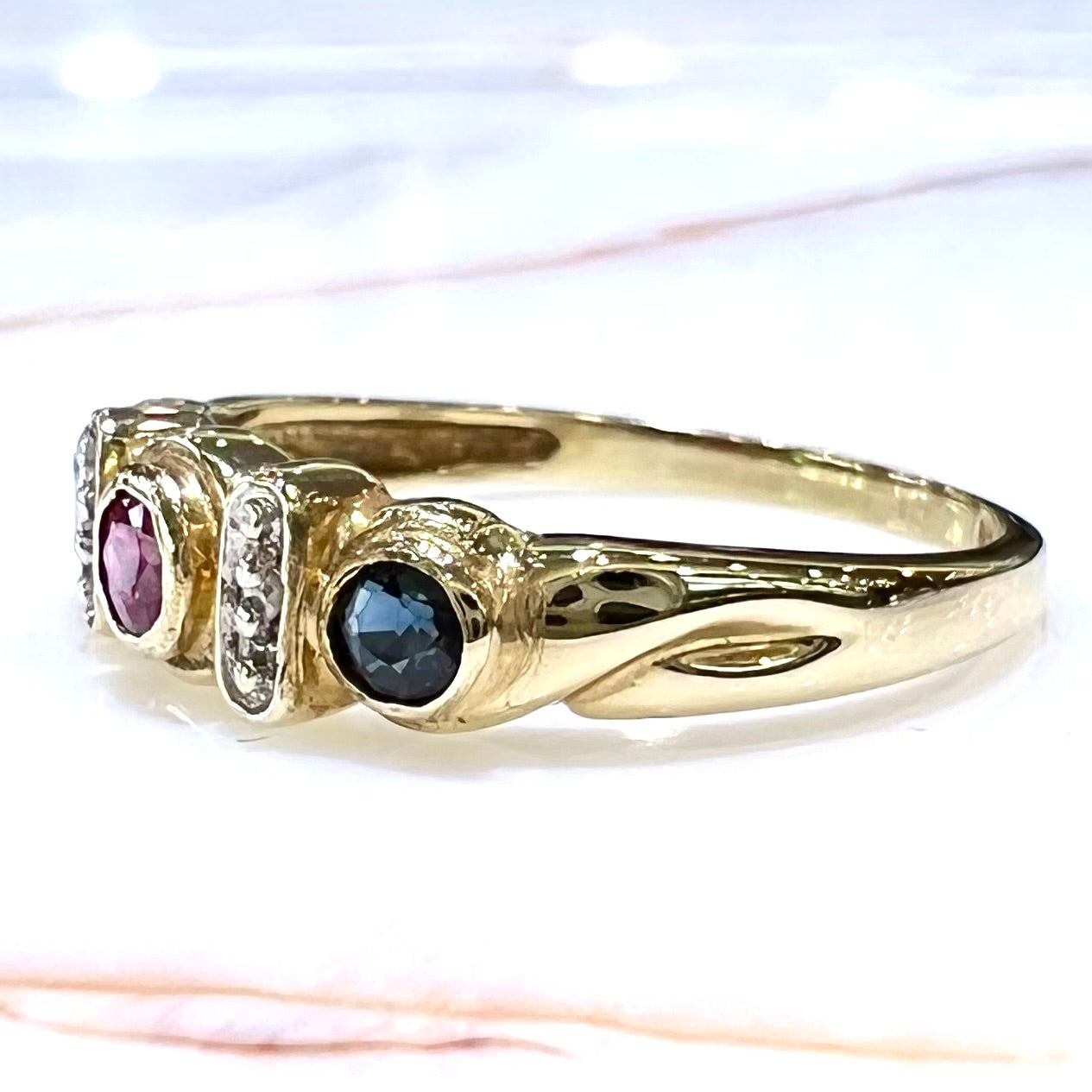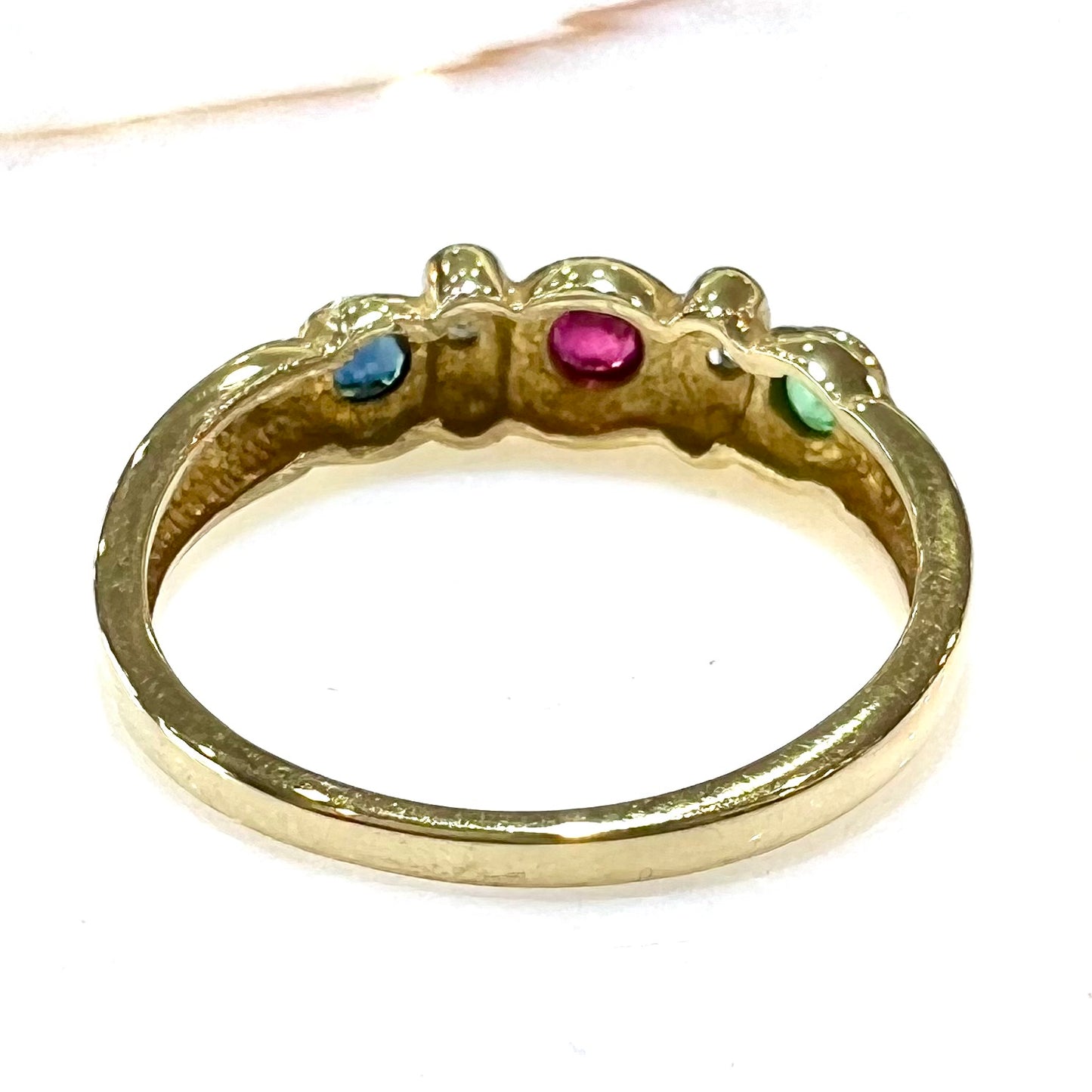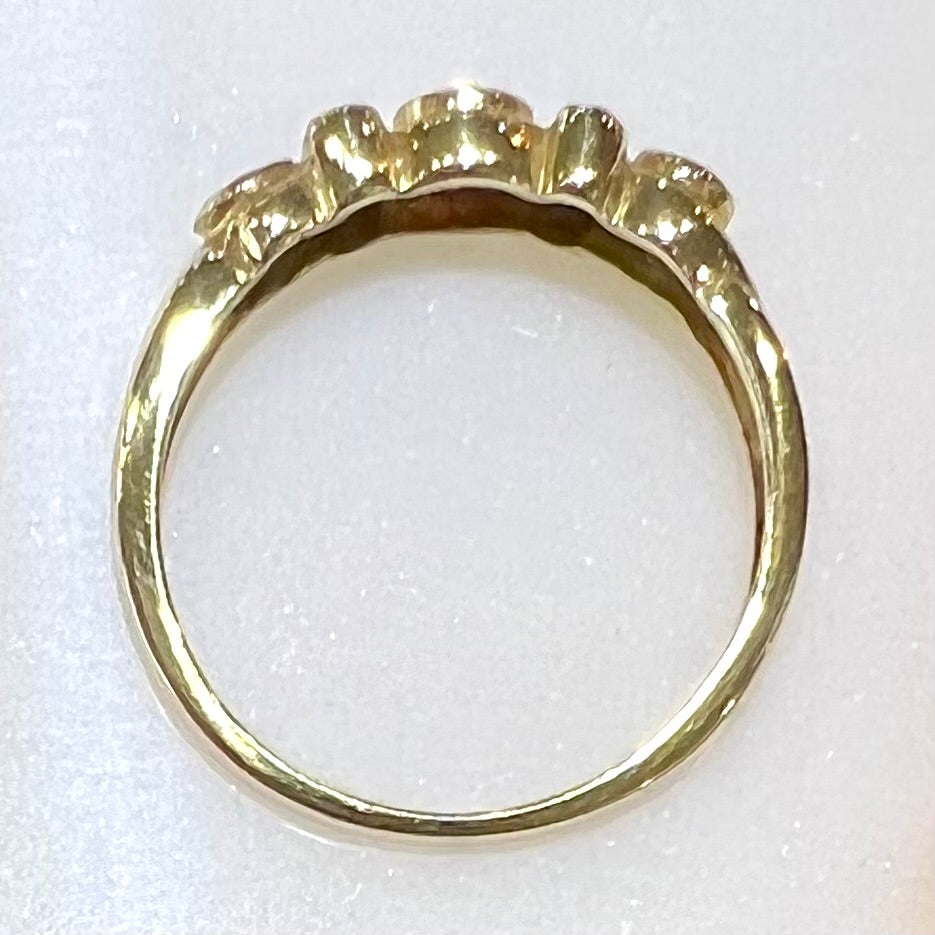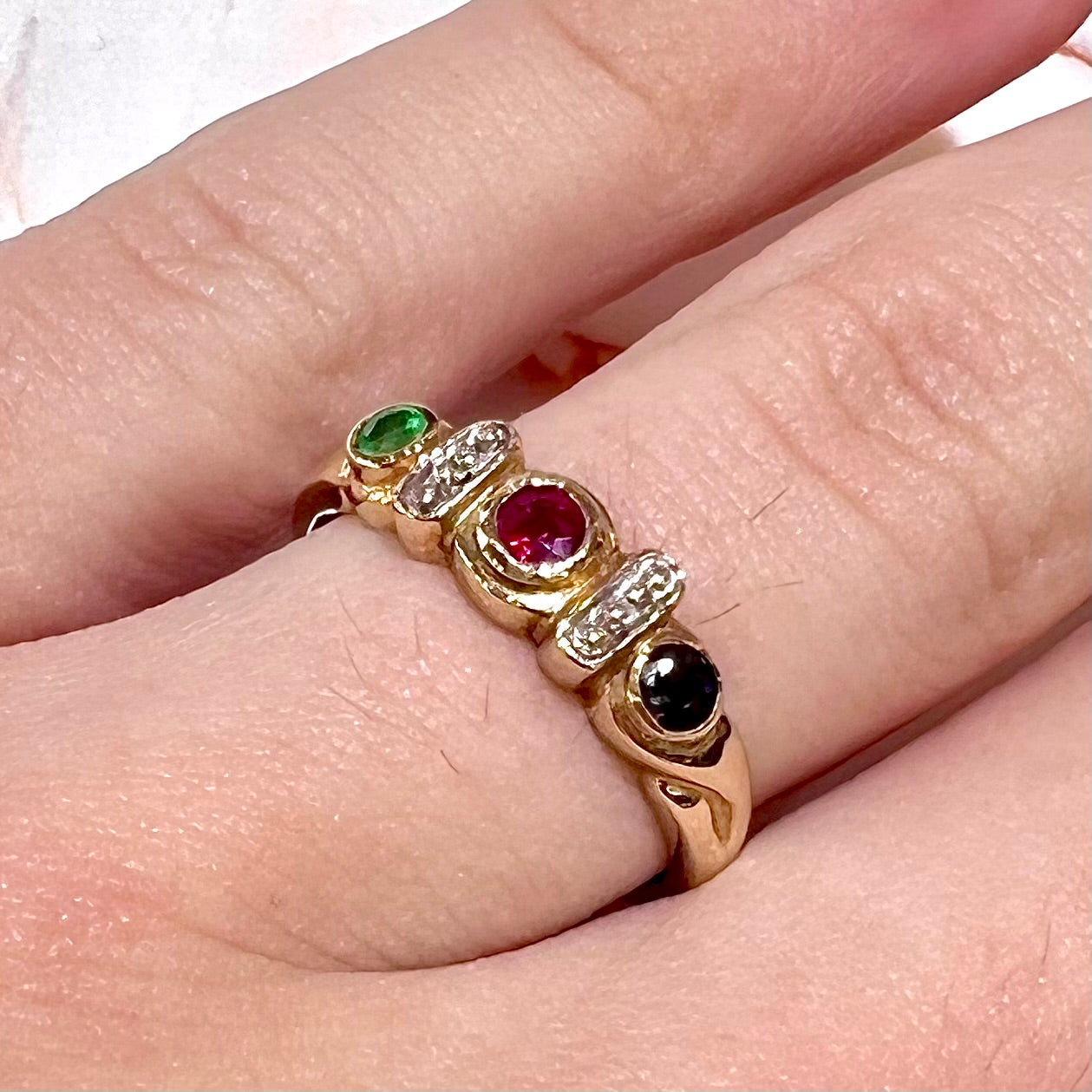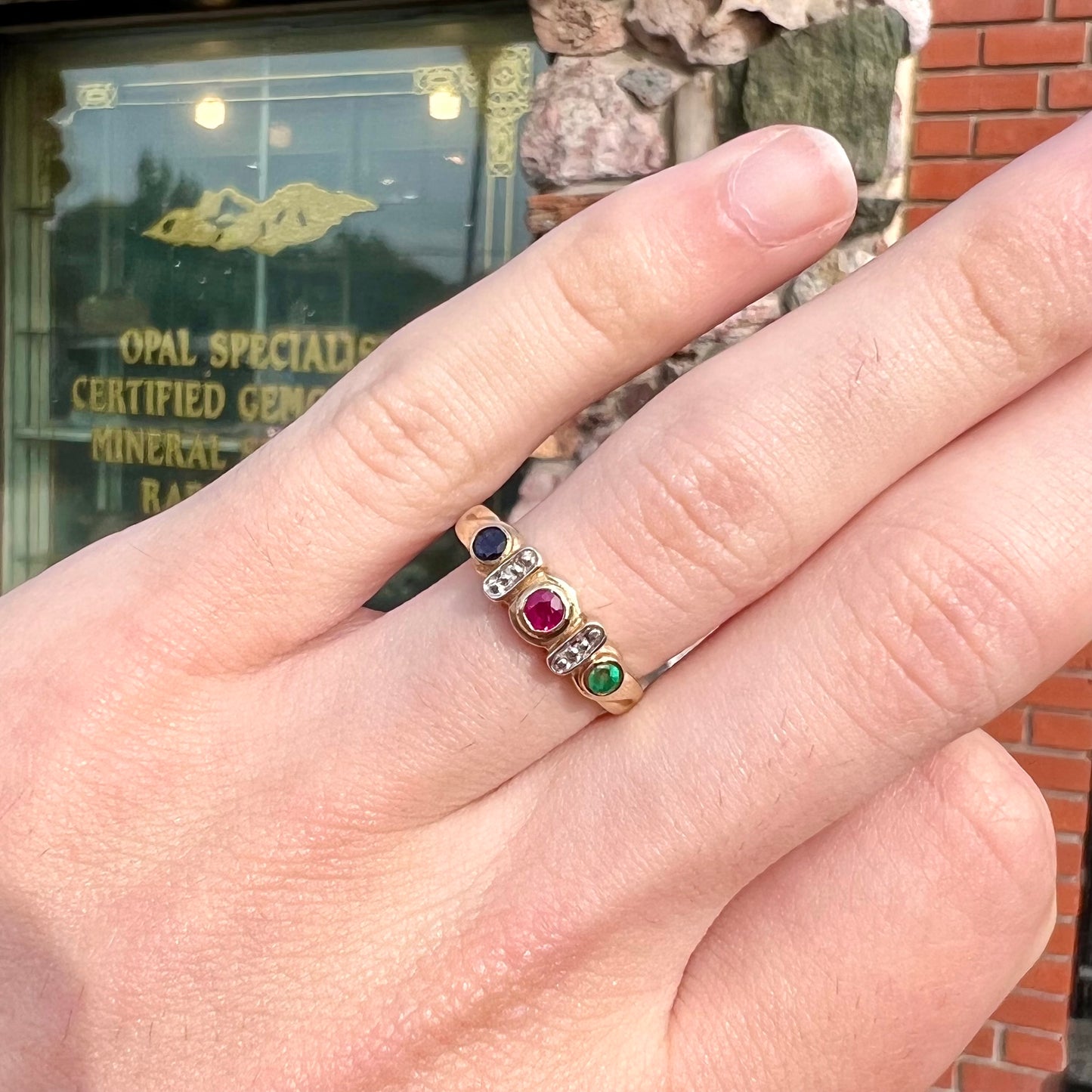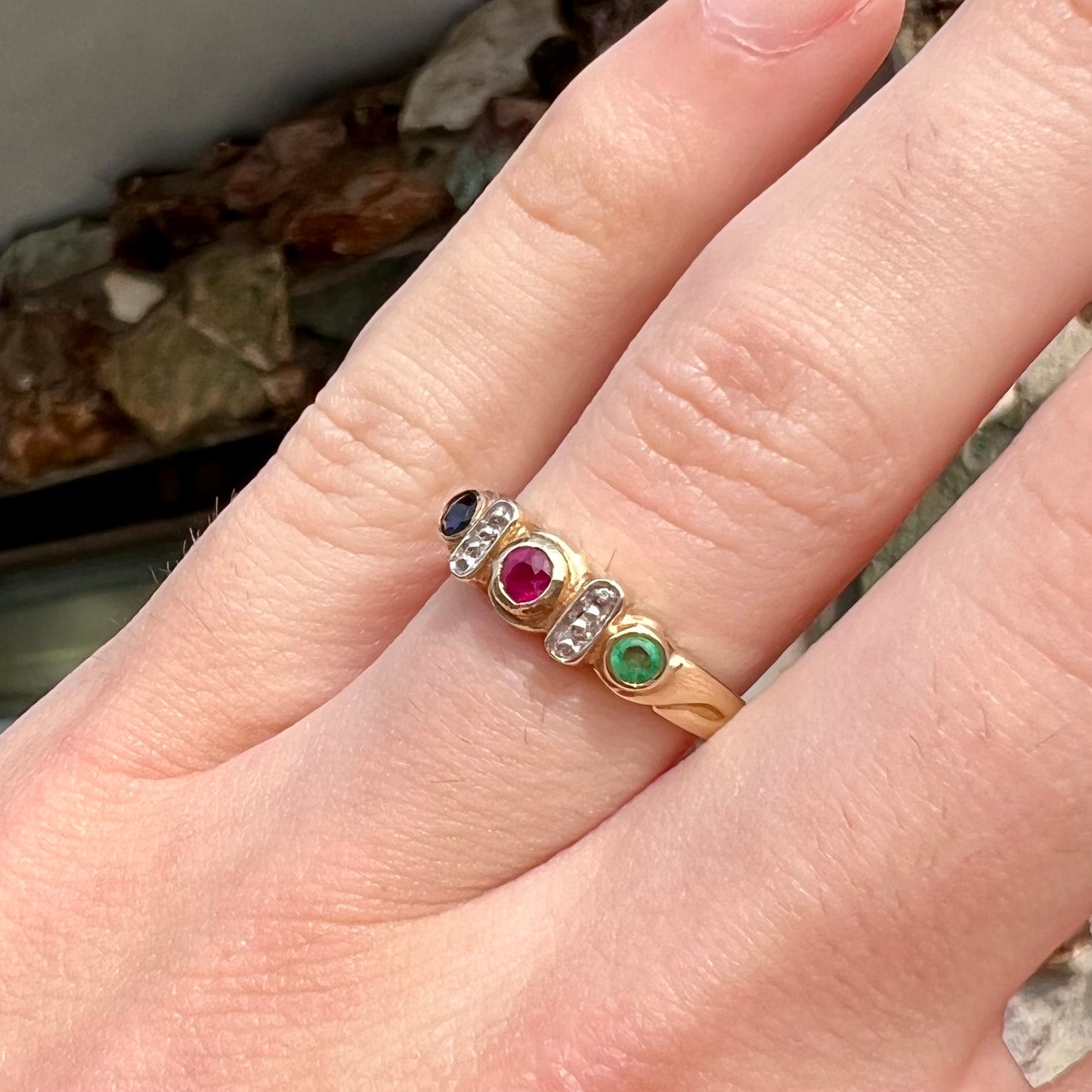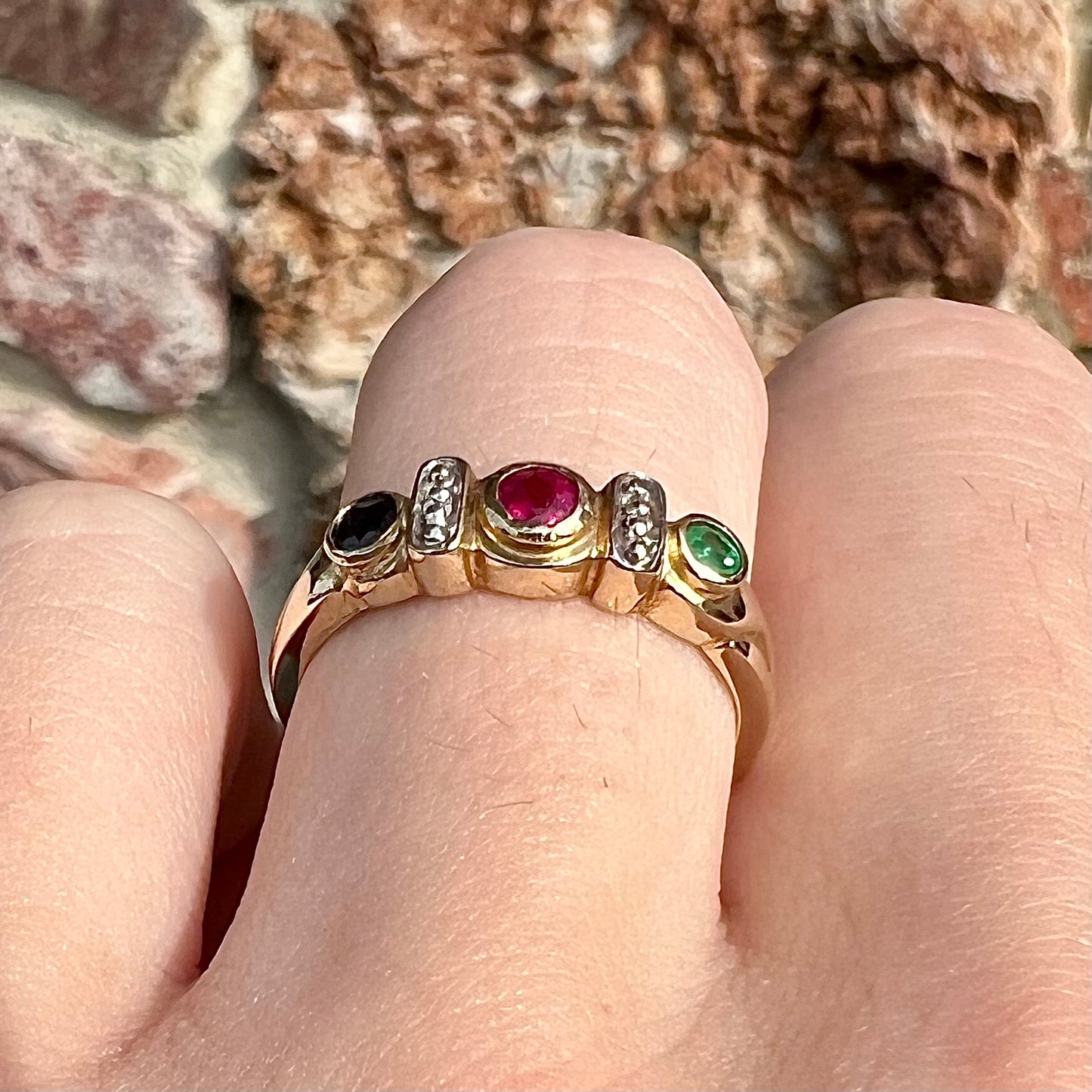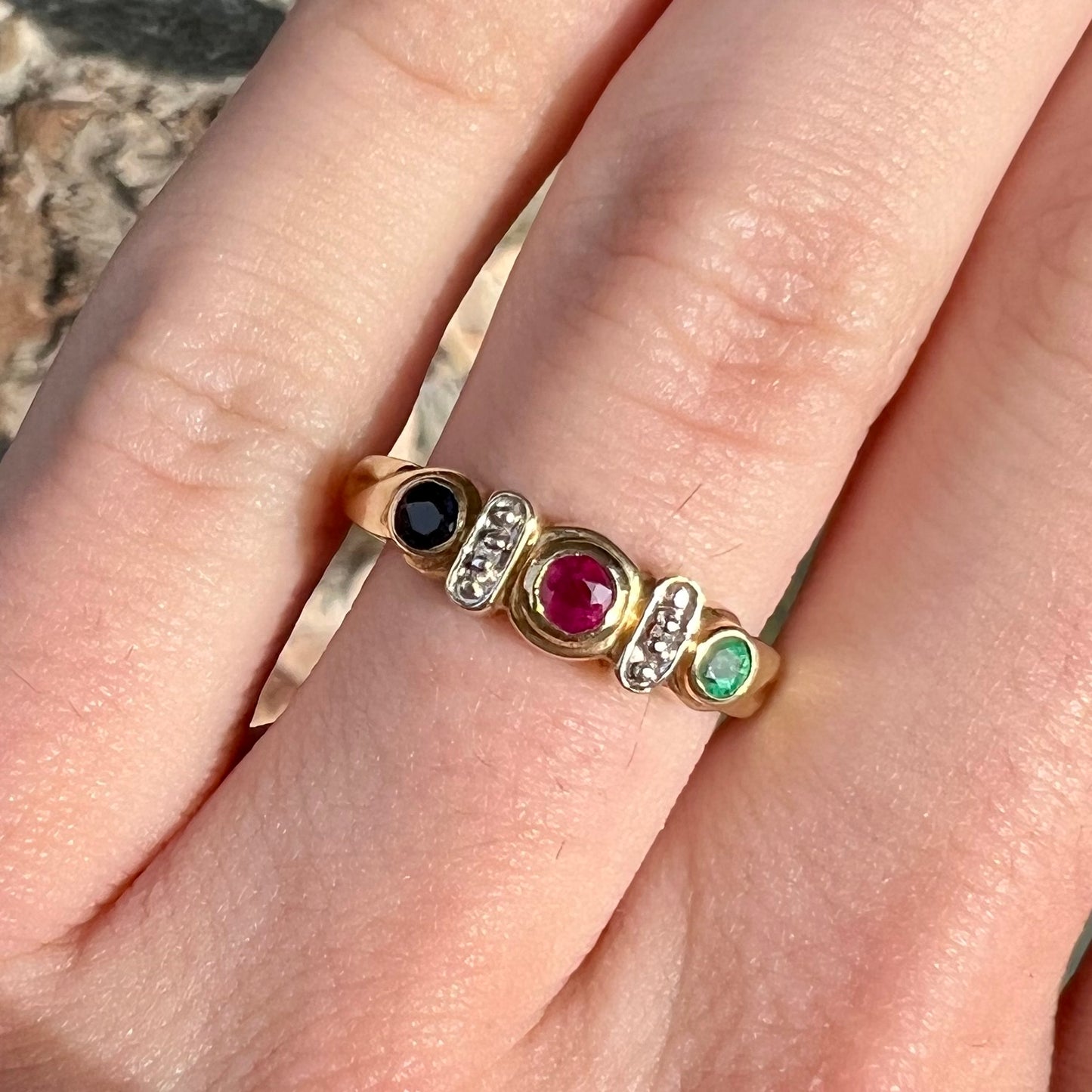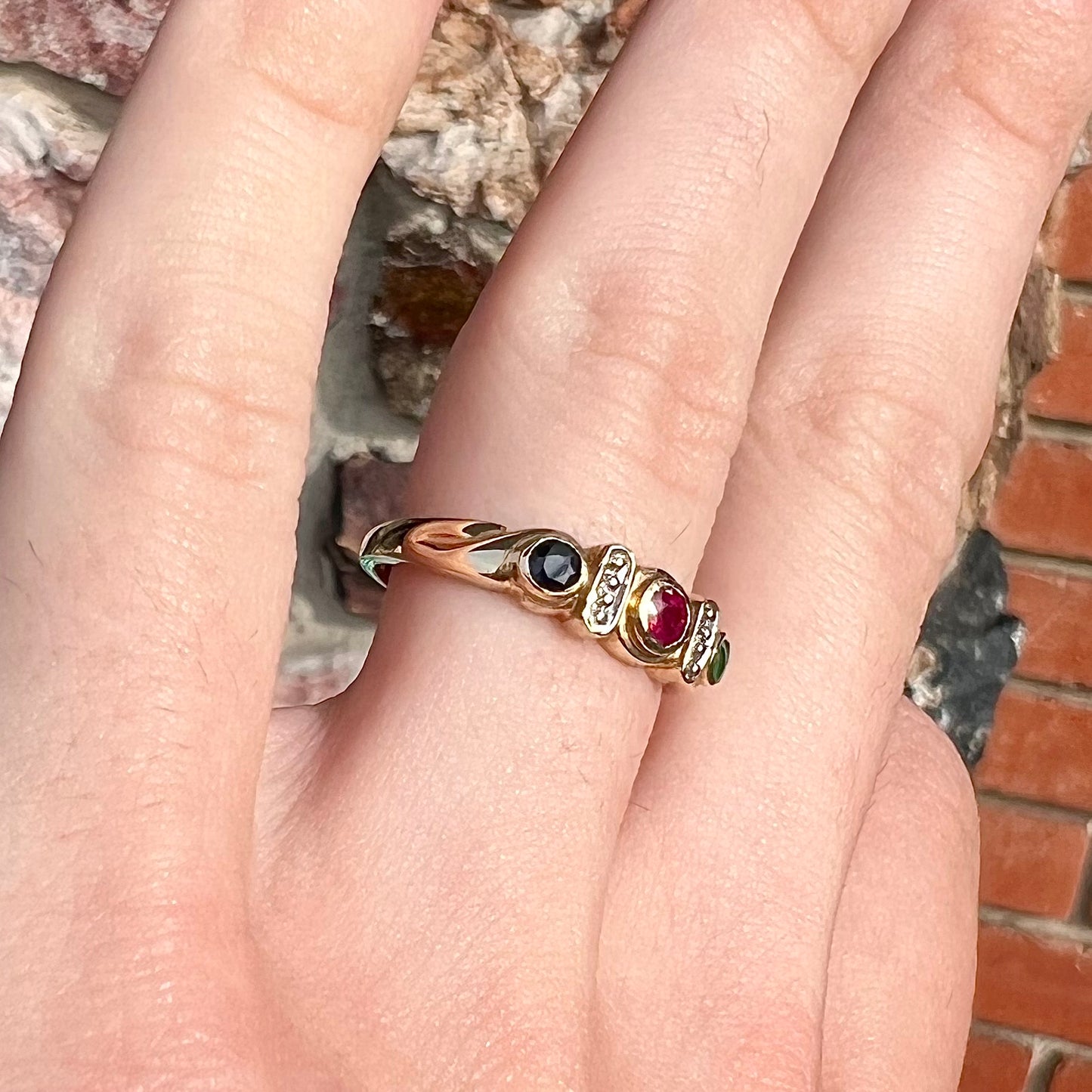Burton's Gems and Opals
Three Gemstone Ring | 10kt
Three Gemstone Ring | 10kt
Couldn't load pickup availability
A Bit About The Piece:
Past, present, future ring set with three colored gemstones and accented with diamond chips.
Details, details...
The Main Stones: Natural Sapphire, Synthetic Ruby, Natural Emerald
- approximate stone measurements: 3mm each
- faceted round cuts
The Accent Stones: Diamond
- 2 round cuts
- approximate total carat weight: 0.01ct
The Setting: Cast Bezel Set Ring
- 10kt yellow gold, solid
- default size: 7.00
About Ruby:
Ruby is a red variety of "corundum," the same family of gems as sapphire. While all ruby is red sapphire, not all red sapphire is ruby. The term "ruby" is a rather subjective one, with many gem merchants eager to use the word liberally. If a stone has too much purple, pink, orange, or brown (giving a brick-red appearance), it is to be referred to as sapphire of that particular color (with "brick red" sapphire simply referred to as "red sapphire"), not ruby. Ruby is the official birthstone for the month of July.
All corundum, natural or synthetic, ranks 9 on the Mohs hardness scale and is very tough. This material is incredibly durable and highly encouraged to those shopping around for an alternative stone for an engagement ring. Ruby and sapphire of any color make excellent rings that can be passed down through generations. Ruby can be cleaned with chemical jewelry cleaners without any worry.
About Sapphire:
While many know sapphire to be blue, the gemstone forms naturally in any shade and saturation of color on the color spectrum. Like ruby, sapphire is a member of the "corundum" family. This means that all rubies are a particular shade of red sapphire. Another notable variety of corundum is "padparadscha sapphire," a sunset, salmon pink sapphire from Sri Lanka, Madagascar, and Tanzania. Other popular colors in the trade include yellow, pink, and white sapphire. Color changing varieties do exist, as well as stones that display "asterism," a term for when reflected light creates a star effect in the stone. Most sapphire available on the market is heat treated. This is an accepted practice in the industry, and it is best to assume ALL sapphire has been heat treated unless otherwise proven by a trusted independent laboratory report. Sapphire is the official birthstone for the month of September.
Sapphire is an incredibly durable stone that is excellent for everyday wear. The stone ranks 9 on the Mohs hardness scale and is highly scratch resistant as a result; it also is resistant to chipping or breaking due to being tough as well. Sapphire jewelry, natural or manmade, is safe to clean in chemical jewelry cleaners, ultrasonic cleaners, and steam cleaners.
About Emerald:
Emerald is a gem quality green "beryl," the same family of stones as blue aquamarine and pink morganite. It is estimated that Colombia produces 70-90% of emeralds on the world market, though in addition, extra-fine grade stones are known to come from Zambia and Brazil. Inclusions are common and expected to be seen in emerald; it is widely accepted practice for gem cutters to conceal inclusions by soaking stones in cedarwood or grapeseed oil. Most stones available on the market have been treated this way.
Though emerald is a hard, scratch resistant 7.5 to 8 on the Mohs hardness scale, we strongly advise to wear emerald rings with care. Stones can be brittle and subject to chipping or breaking on sharp impact. Do not clean emerald jewelry in an ultrasonic cleaning machine or with a steam cleaner. Clean with mild soap, water, and a soft bristled toothbrush. Avoid soaking emerald for long periods of time to preserve any assumed oil treatments in the stone. Should these treatments be compromised, most jewelers can fix them.
Wanna closer look?
Share
